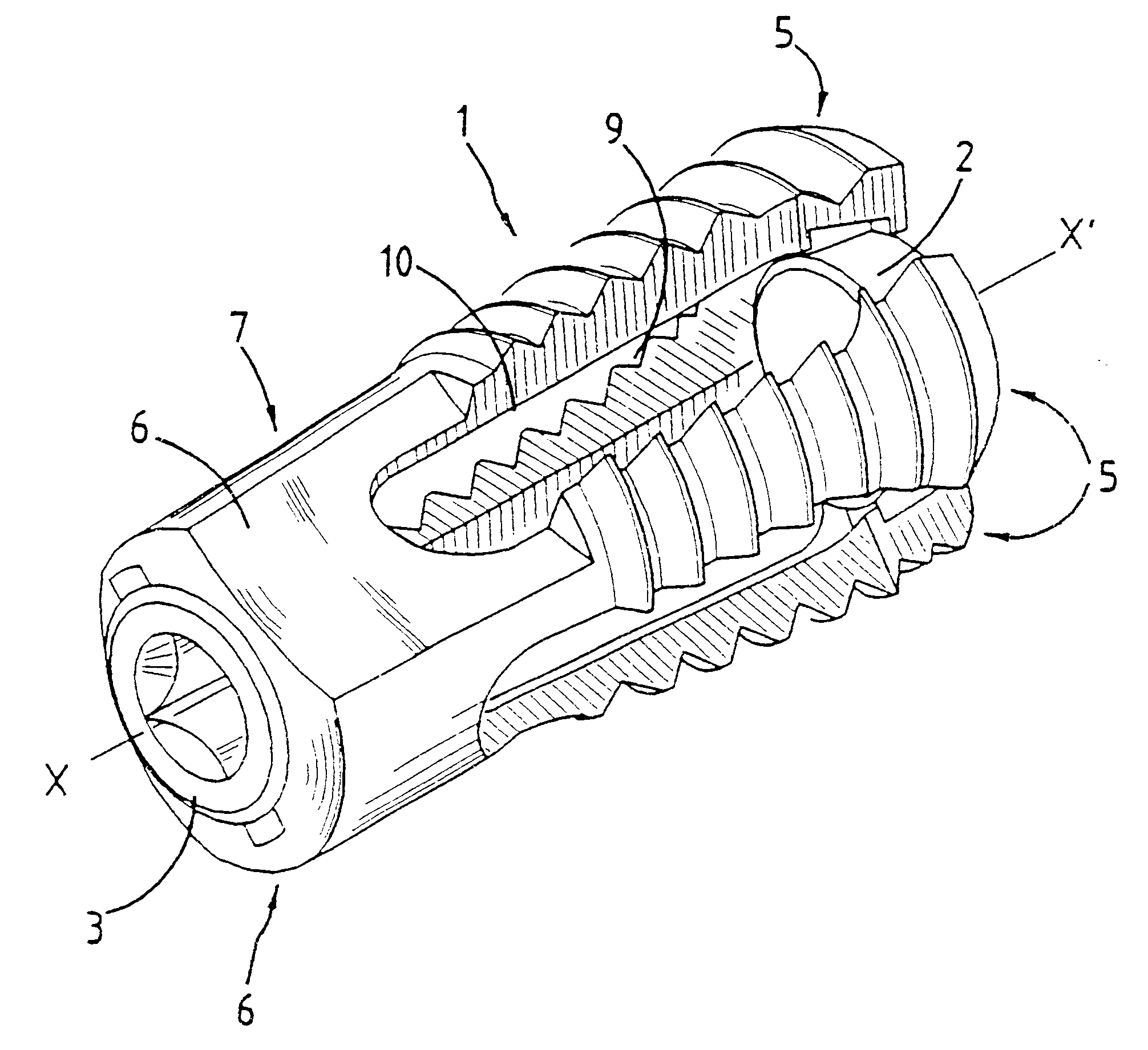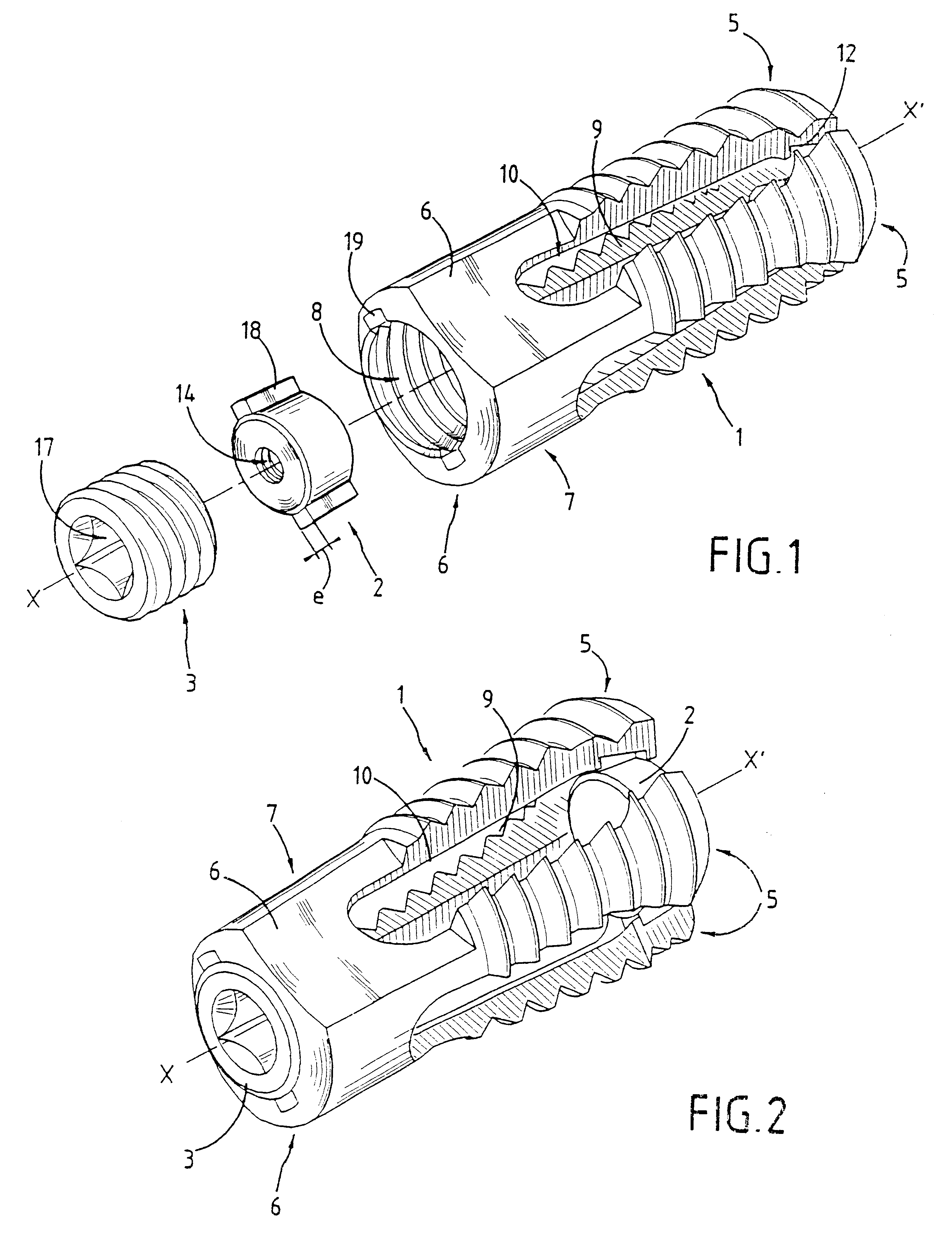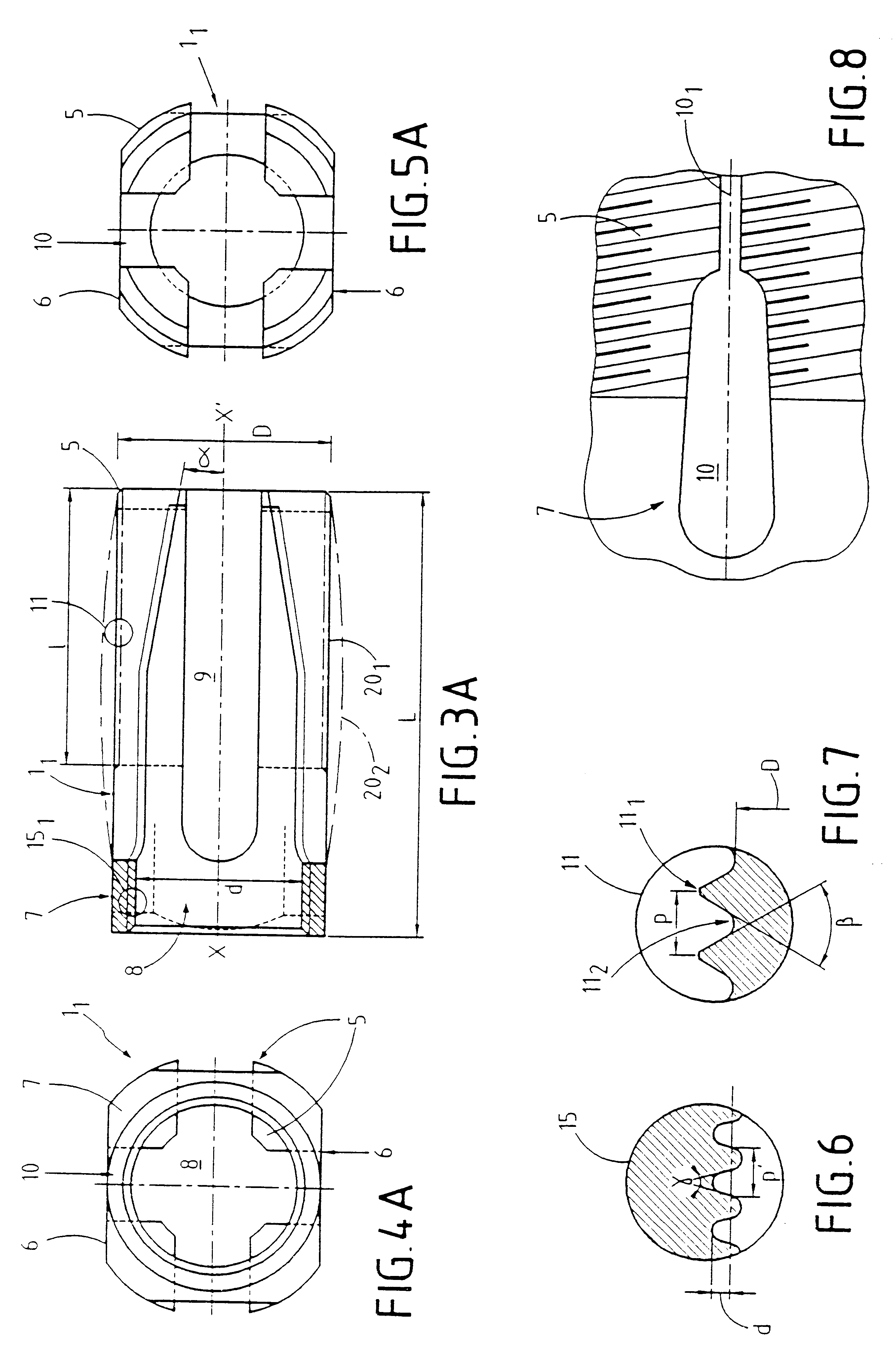Method of providing proper vertebral spacing
a technology of proper vertebral spacing and bone implants, applied in the field of implantable bone implants or prostheses, can solve the problems of not enabling the use of rigid cages from a posterior, small inside volume, and complicating implementation, and achieve the effects of improving consolidation, facilitating use, and facilitating placemen
- Summary
- Abstract
- Description
- Claims
- Application Information
AI Technical Summary
Benefits of technology
Problems solved by technology
Method used
Image
Examples
Embodiment Construction
Whatever the embodiment, the expandable osteosynthesis implant comprises in conventional manner branches 5, each connected at one end to a seat 7 pierced by an orifice 8. According to an essential characteristic of the invention, said branches 5 and the seat 7 constitutes a hollow cage 1 which, in a "rest" position as shown for the embodiments of FIGS. 1, 3A, 4A, and 5A, and of FIGS. 9, 10, and 11, is of general outside shape that is cylindrical or quasi-cylindrical having a cross-section which is also the director curve of said cylinder that is circular or quasi-circular, with the generator line which engages said director curve and which generates the cylinder or quasi-cylinder by moving around its axis of symmetry XX' being either a straight line or a convex circular arc of large radius: this provides either a circularly-symmetrical right cylinder as shown in solid lines 20.sub.1 in FIG. 3A, or else a pseudo-cylinder referred to in the present specification as being "oval" or "ov...
PUM
 Login to View More
Login to View More Abstract
Description
Claims
Application Information
 Login to View More
Login to View More - R&D
- Intellectual Property
- Life Sciences
- Materials
- Tech Scout
- Unparalleled Data Quality
- Higher Quality Content
- 60% Fewer Hallucinations
Browse by: Latest US Patents, China's latest patents, Technical Efficacy Thesaurus, Application Domain, Technology Topic, Popular Technical Reports.
© 2025 PatSnap. All rights reserved.Legal|Privacy policy|Modern Slavery Act Transparency Statement|Sitemap|About US| Contact US: help@patsnap.com



